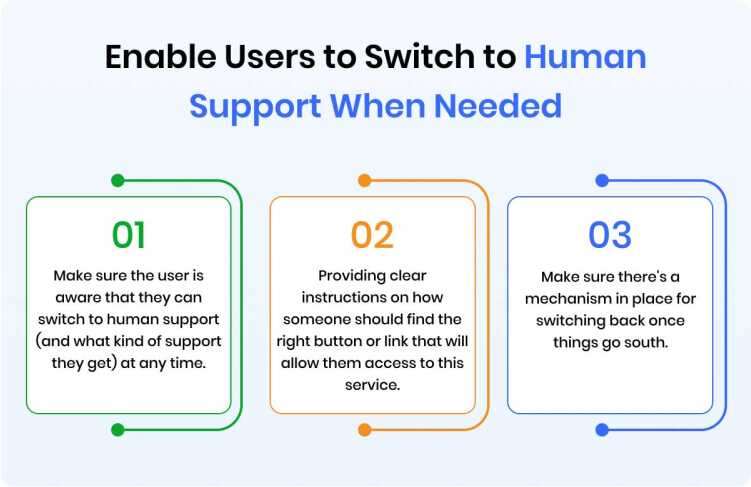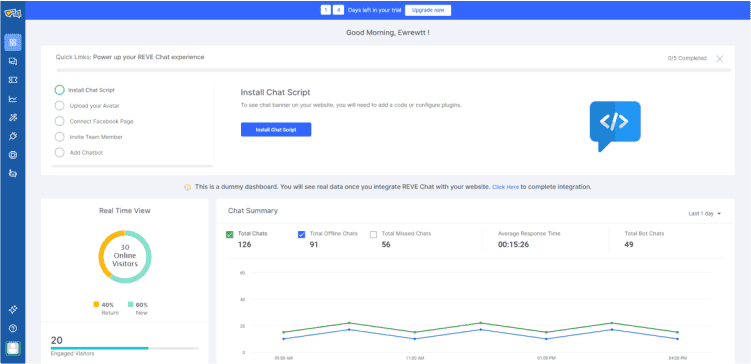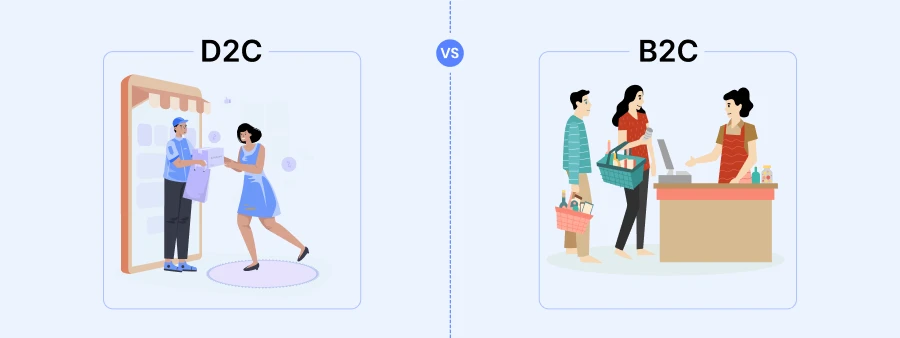Chatbot user experience needs to be natural and intuitive. It needs to understand what the user says and do it in the way they expect, rather than the way you want them to do it.
A good bot user experience is also essential when it comes to making sure that users feel comfortable interacting with your bot instead of just giving up after trying it once or twice.
In this article, explore 9 ways to deliver the best chatbot experience.
Why Chatbot User Experience is Vital?
Chatbots are becoming more popular as a way to engage with customers, but it’s important to remember that chatbots are unlike any other form of digital interaction.
The chatbot user experience needs to be more than just speaking back at the user like they are talking to a person. In order for a chatbot user experience to work, it needs to have human characteristics. This means that there need to be conversations between bots and users that feel like real conversations. If a conversation feels robotic or unnatural, then it will not have any appeal to users and will likely be rejected by them as well.
Effective chatbot user experience can help businesses provide a better customer experience by making it easier for customers to get in touch with their businesses, solve problems, and make purchases.
Effective Ways to Deliver the Best Chatbot Experience
If you’re a business owner, chances are you’ve heard about chatbots. But if you’re thinking about using them in your business, there are still lots of questions to be answered. How do they work? What should I ask my customers?
What happens if they don’t want to buy from me? The truth is that not every business owner or customer will want or need a chatbot.
But it’s essential for everyone to know how they work so that we can make informed decisions about how best to use them in our own businesses and lives.
-
Challenge
Chatbots are a new type of customer service that can be used to solve problems and provide information. This means that there is a challenge in creating the best experience possible when you chat with your customers.
There are several things to consider when designing your chatbot:
- How do users know they’re talking with a bot? Users will expect some level of interaction from you, but not everyone knows fully what this means or how it works. If you want users to feel comfortable using your bot (and not get frustrated), then make sure they understand what happens during their conversation with it—and all the terms associated with it.
- What kind of responses do I want my bots to provide? Some questions require immediate answers while others may need more research before providing an answer—which means different types of responses will work better for each type of query depending on its nature and severity level (i.e., “is there an electric fence around my house?” vs “can I buy an umbrella today?”).
2. Turn Emotion Into Personalities
One of the most powerful ways to tell a story is through emotion. In order to create an emotional connection with your audience, you need to turn what they say into personalities they can relate to and connect with on an emotional level.
Emotional resonance is achieved by using tone of voice, facial expressions, and body language in conjunction with speech. Use humor when appropriate; it’s not only enjoyable but also effective at building trust between users and chatbots (more on this later).
When creating personas for your chatbot, use gender as well! It gives us something we can connect with—and helps us feel more comfortable talking about ourselves or our experiences with others who have similar identities.
3. Make Sure Users Know They’re Chatting With a Bot
The first thing you can do is make sure users know they’re chatting with a bot. There are lots of ways to do this, but the most important thing is that your chatbot should be friendly and conversational.
This means having a friendly tone in both voice and text messages, as well as using an upbeat tone when delivering information or answering questions. You also want to use formal language when interacting with customers: if someone says “Hello,” then respond with “Hi!” rather than something like “Hey there.”
When users interact with your chatbot on Facebook Messenger or WhatsApp (or any other messaging platform), make sure the experience feels natural so people don’t feel like they’re talking to an automated system—even though that’s exactly what they’re doing!
4. Leverage Your Human Support Teams
If you’re using a chatbot, it’s important to know that you need to leverage your human support teams. Chatbots are only as good as the people who are helping them and supporting them at any given time. The best way to do this is by using human support teams for customer service issues and technical issues.
If you have a customer service issue that needs help with, ask your team members if they would be willing to train the chatbot on how best to handle that specific type of problem.
So that when someone asks about it later on down the line (elderly people tend not to be very tech savvy), they’ll already know exactly how things work in order for them not to get confused!
5. Train Your Bots With the Use of NLP
In order to deliver the best experience possible, you need to train your chatbot using NLP.
NLP is a set of techniques that allow computers to understand human language and use that knowledge in order to make decisions or produce results. It’s often used by speech recognition software, but it can also be applied directly in chatbots if you want them to have a better understanding of what they’re saying and doing.
The main thing about NLP is that it helps machines learn more about us, humans, through our interactions with them—and vice versa!
This makes sense since we live in this world together: We talk every day, so why wouldn’t computers benefit from learning from us?
6. Use Cues From the User to Deliver Relevant Experience
You can use cues from the user to deliver and relevant experience.
For example, if you want to provide information about your chatbot’s capabilities and features, you can ask questions like
- What is my [product name]? – What does the [product name] do?
- Can I ask [question]? Can I get help with [question]?
7. Enable Users to Switch to Human Support When Needed
The best way to make sure your users are comfortable talking with a chatbot is to give them the option of switching to human support when necessary. If your chatbot can’t handle an issue, it’s much more likely that it’ll just give up and go somewhere else. This can be accomplished by:
- Making sure the user is aware that they can switch to human support (and what kind of support they get) at any time.
- Providing clear instructions on how someone should find the right button or link that will allow them access to this service.
- Make sure there’s a mechanism in place for switching back once things go south.
8. Use Multiple Channels to Provide a Seamless Experience
It’s important to use multiple channels to provide a seamless experience. A chatbot can send messages through voice, SMS, and email. In this way, you’ll be able to offer your customers the best way possible for them to communicate with your business—and deliver consistent messaging across all channels.
The best way to ensure that each channel delivers the same consistent experience is by using the same technology platform behind all of them.
This allows developers who create bots for different platforms (like Facebook Messenger) or different types of businesses (like Uber) more flexibility when building their customer experiences.
9. Make Everything Accessible in One Place
You should make sure that all of your user’s needs are met in one place. This makes it easier for them to find what they are looking for, and it saves time by eliminating the need to search through multiple pages of content.
Make sure that when you’re building a chatbot, you think about how users will interact with it. The most important thing is for them to feel like their questions have been answered by using this platform.
So, make sure that everything can be accessed from within the app or website itself rather than having them log out and go somewhere else first (like Facebook Messenger).
Why Should You Use REVE Chatbot to Deliver the Best User Experience?
REVE Chat is an AI-powered chatbot that can be integrated with any website or app. It enables you to create the best chatbot experience for your customers. It has a wide range of features such as sentiment analysis, bot analytics, data sanitization, a fallback option, and support FAQs that can help you make your chatbots more interactive, conversational, and engaging.
It can be used to provide customer service, assist with product purchases, answer questions, and provide company updates. The bot has the ability to understand natural language processing and communicate in the same way as humans.
If you want to deliver the best chatbot user experience then REVE AI-powered chatbot will be the best option, because it can analyze the user sentiment and they deliver a contextual reply.
Sign Up now and enjoy 14 days FREE trial.







